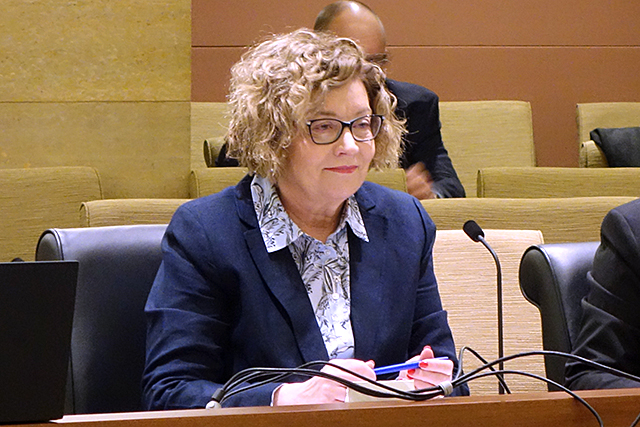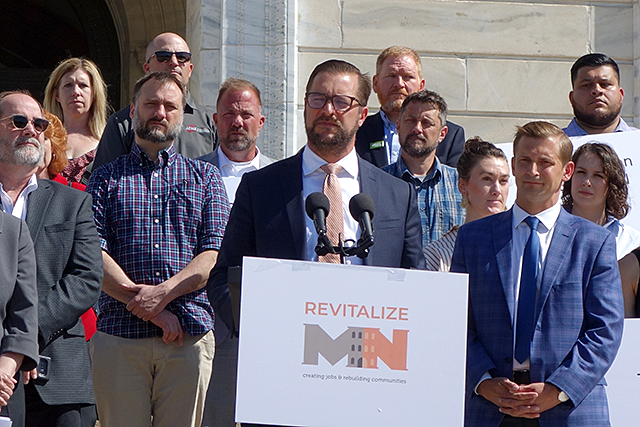Supporters of the tax credit that helps fund historic preservation projects around the state got great news during the closing weekend of the 2022 Minnesota legislative session. Not only was the credit extended as part of the bipartisan compromise tax bill, but supporters would also no longer have to return to the Legislature every few years to get the credit extended.
House Taxes Committee Chair Paul Marquart is a stickler on keeping an eye on tax credits and thinks sunsetting them requires backers to return and make the case for their continuance. But when reminded that the agreed-upon taxes bill removed the sunset on the preservation credit, Marquart laughed and said: “I’m a softy.”
It might have helped that the Senate Taxes Chair Carla Nelson is a big supporter of the program, though it has many friends — and few obvious opponents — at the Capitol.
But the 2022 session ended without lawmakers passing most of the major spending and taxes bills. And as with dozens and dozens of other provisions that were in bills agreed to but never voted on, the preservation credit is in political limbo, a victim of bigger disagreements on bigger issues.

Without action before then, dozens of projects that do not yet have their final approval would be delayed, at best. One of those is a project on University Avenue in St. Paul that seeks to convert a 1930s art deco furniture store and warehouse into space for, among others, a nonprofit arts group, FilmNorth, whose mission is to provide education and resources to film and media artists. The new location will include a screening room plus indoor and outdoor spaces for the organization.
Colin Oglesby, a partner with d/O Architects, said the $11.5 million adaptive reuse of a Clarence Johnston building is counting on $1.5 million in state historic preservation tax credits to go along with $1.5 million in federal credits.
The project is currently before the National Parks Service, which approves preservation projects that fit the federal Department of Interior standards, and therefore has not yet received its final approval for state credits. Without an extension of state credits, the project is in danger, said Bethany Gladhill, FilmNorth’s director of business affairs.
An analysis of the tax credit by University of Minnesota Extension reported there were 34 project applications during the 2021 fiscal year with a value of $890 million. The report estimated that half of the cost of the credits will be repaid in the first year that completed projects are subject to state and local taxes. Since 2011, projects helped by the credit have supported 28,485 jobs, the analysis stated.
The credits are an important financing tool for preservation projects because they are what are known as refundable credits. That means an entity can use them to defray their taxes and get a refund if their tax liability is less than the value of the credit. It also allows a project to sell the credits to others who use them to lower their tax payments to state and federal governments. Large corporations buy tax credits at a discount, usually at 90-to-95 cents on the dollar, and then apply the entire dollar amount to their own tax liability.

“The continued fragmentation of that tax cycle in which tax credits can be taken, either with short-term extensions or breaks in between, only serves to destabilize this market,” she said. “Our concern in not getting this passed now is we’ll further destabilize the tax credit in Minnesota. There are 38 states with historic tax credits and people will go elsewhere.”
Rethos has created a program that helps developers in five states take advantage of historic preservation tax credits.
The preservation tax credit in Minnesota was first adopted in 2010. Tax-bill writers decide how much money in any given year is available for credits, and the pending tax bill would set aside $6.7 million for the next 12 months and $32.2 million over the following 24 months.
The same tax bill agreement would cost $4 billion over the same three years. It includes an elimination of the remaining state income tax on Social Security benefits, a small rate reduction in the lowest income tax tier, and a simplification of the renter tax credit which should expand its use.
Chris Sherman, the president of Sherman Associates and chair of Rethos, said his firm has projects underway, including the North Star Center renovation and the J.I. Case Building (the Old Spaghetti Factory site) in downtown Minneapolis. But several projects being planned do not have final approval yet and will be put at risk by a premature ending of the tax credit, including the Landmark Tower in St. Paul and the Duluth Armory.

Adam Duininck, the director of government affairs for the regional council of carpenters, said the projects aided by the credit provide work for skilled tradespeople and income for material suppliers, architects and engineers. “We need to express our frustration and disappointment,” Duininck said. “If legislative leaders don’t hear how frustrated we are, then we just accept that it’s ok that gridlock happened, that nothing happened.”



0 Commentaires